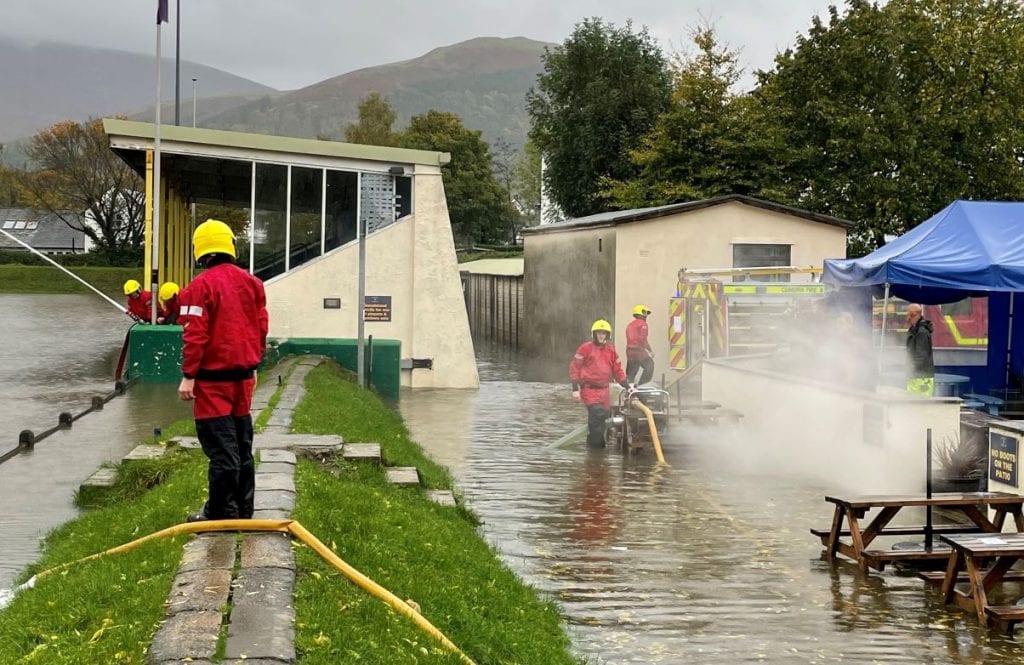
More than £1 million of damage was racked up in Cumbria by the latest bout of flooding with the bill expected to spiral as more problems are found, officials have revealed.
In Keswick alone, the downpours seen in the days leading up to the end of October, resulted in 122mm of rain (4.8 inches) falling over a 48-hour period.
Keswick was regarded as having been “saved” because Thirlmere reservoir had spare capacity of around 6.5 metres after its water level plunged dramatically over the warm summer.
But a new report to Keswick Flood Action Group by Dr Mark Roberts has found that in spite of this, had levels been higher, the implications further downstream could have been far worse for Cockermouth and Workington.
Dr Roberts found: “It is my conclusion that had space not been available in Thirlmere throughout the Oct 2021 rainfall event, flooding in both Cockermouth and Workington may well have occurred.”
Cllr Keith Little, the county’s transport chief, revealed some hard statistics about the wet October.
Countywide, 40 properties were flooded, 71 alerts triggered at bridges over rivers and more than 90 sites significantly damaged.
Addressing a meeting of Cumbria County Council, he said it was “ironic” that at the same time as world leaders were in Glasgow for COP26, Cumbria was picking up the pieces of another significant weather “event”.
More than 350 flood related calls were received by the county council’s highways team in the final five days of October, Cllr Little added.
Cllr Tony Lywood, who represents Keswick on the county council, said as climate changes takes place, the downpours seen in the area would become more extreme and unpredictable.
“The fact that we were told by the Environment Agency that the first flood in 2005 was a one in 100 year event, we then had 2009 and 2015. I think we are now moving into a realm where flooding will become more frequent and more drastic,” he said.
Lynne Jones, chair of Keswick Flood Action Group, said in terms of impact the downpours resulted in sewage flooding on to Penrith Road due to a blocked sewer.
A lot of water had also flowed around cottages at Low Brigham by the river Greta, although no properties were breached, she said.
“Other than that, Keswick was generally ok. It was the surface water that was the issue,” she said.
But in a sign of the alarm that the rainfall generated locally, membership of Keswick Flood Action Group’s Facebook page rocketed from under 700 to more than 1,100 in just a couple of days.
“That goes to show the fear some people have felt,” said Mrs Jones.








